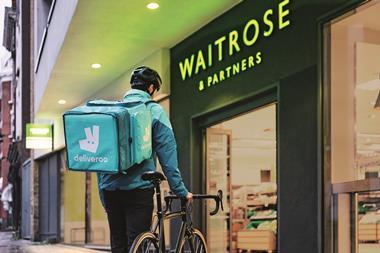n Andy Thornton sets out five key areas that leading retailers and manufacturers have identified for successful collaborative working
It's a commonly held belief in the fmcg industry that we could sell more, reduce costs and better meet our customers' needs by working collaboratively. Not by talking about it or attending grand conferences, but by simply making it happen. Yet in today's tough economic climate, can retailers and manufacturers truly work together or will financial performance always keep collaboration firmly in the fixed project box?
Major industry issues such as supply chain enhancement, new product development, food safety and category management require long-term collaboration between retailers and manufacturers. However, while certain proactive suppliers and retailers co-operate on key issues, there are still many companies big and small, which do very little. Many of the disappointments in collaborative working come from a lack of strategic alignment and clarity.
As one supplier was heard to comment recently: "We cannot collaborate on everything, so we try to define a 75% strategic fit and a middle ground that will deliver the overall objective."
Not agreeing the scope of collaboration before the process starts is a major cause of failure, as is a lack of internal collaborative working.
Category management is one area where many good business practices are a day-to-day reality and Marks and Spencer's food business unit is achieving significant growth with category proposals planned, produced and implemented in collaboration with key suppliers.
To debate the issues, the retail consultancy srcg brought together a group of leading retailers and manufacturers for the first time Marks and Spencer, BP Connect, T&S Stores, B&Q, Coors Brewers, British American Tobacco, Cadbury Trebor Bassett, Green Isle Foods, PepsiCo, Unilever, Uniq and SPA. The group saw five key areas as critical to successful collaborative working:
l People plus technology deliver programmes: The involvement of the human resources department is critical, yet it is often ignored in the strategic planning of major programmes; employees must have the skills and a personal stake in the success of a programme. Few manufacturers target their account teams on retailer category growth, while retailer roles such as product development or logistics are seldom rewarded against any type of joint plan. A common reward mechanism such as joint Key Performance Indicators (KPIs) is a good motivator.
While rotating people through jobs does help to develop broader skills, moving them about continuously creates unnecessary strains on collaborative working. It's also critical that we all become better at career and succession planning. Both retailers and suppliers should identify what they need and stay committed.
l Integrated information strategies are needed: Without a joint place to go to work' collaborative working will struggle to deliver efficient and timely solutions. A successful integrated information strategy is about delivering data sharing, flexible working, real-time analysis and freeing up time. Having the appropriate information at your fingertips provides a standalone challenge for most organisations, while automating the routine and analytical work in category management is imperative.
l Pace is key: Without sacrificing quality, shorter timescales are needed to deliver results such as category plans or information sharing. A streamlined process is required to deliver quick category plans.
l Implementation must be given the same focus as planning and delivery: How we implement the programme should be central to the process with key stakeholder involvement in definition, planning, communication and measurement. Store operations and other relevant functions should be consulted to ensure that objectives are planned with implementation in mind. And let's also not forget store managers who can bring sharp end reality to many programmes.
l Innovation: Collaborative working requires retailers and manufacturers to make longer-term commitments to each other. Within own label, many retailers are pushing for shorter contracts, creating disparity between the drive for lower prices and capital investment. This will have a profound effect on areas such as fresh and chilled, which are key retail differentiators for shoppers. In short, innovation could be jeopardised because suppliers would not be able to take a long-term perspective and some of the own label and tertiary brand producers will get squeezed out by the multiples if they don't have a more proactive dialogue.
The biggest single factor to success is our people, their training and their skills. If we focus on our customers to define the shape of our businesses, we should understand how and when we can and cannot collaborate. Let's stop talking and get on with the programmes now. n
l Andy Thornton is md of the srcg consultancy
{{FEATURES }}
Close menu
- Home
- Retail & Wholesale
-
Products & Suppliers
- Back to parent navigation item
- Products & Suppliers
-
Product Categories:
- Back to parent navigation item
- Product Categories:
- Alcoholic drinks
- Bakery
- Cereals & breakfast
- Cheese
- Chicken & poultry
- Chocolate
- Confectionery
- Crisps, nuts & snacks
- Dairy
- Fish
- Fresh produce
- Frozen
- Household
- Meat
- Own Label
- Sauces & condiments
- Seasonal
- Soft drinks
- Vaping
- Vegan & plant-based
- World foods
- Suppliers
- People
- Reports & Data
-
Topics A-Z
- Back to parent navigation item
- Topics A-Z
-
Popular topics:
- Back to parent navigation item
- Popular topics:
- Cost of living crisis
- Crime
- Deposit Return Schemes
- Finance
- Government & Regulation
- Health
- Inflation
- Loyalty
- Marketing
- Mergers & Acquisitions
- New Product Development
- Sourcing
- Supply chain
- Sustainability & environment
- Technology
- Ultra Processed Foods
- Vaping
- A-Z all topics
- Content by type:
- Events
- Ask iA (beta)
- Subscribe now
Sign in to comment on this article
Not logged in before? Register for FREE guest access today.
You will be able to:
- Read more stories
- Receive daily newsletters
- Comment on stories
Advert













No comments yet